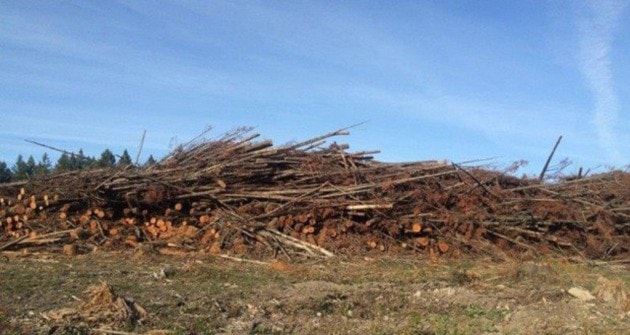Cam Fortems – Kamloops This Week
To a hiker or hunter, the row of logging debris lined across a clearcut looks like a mess left on the forest floor, waiting for a match and the right weather.
But a University of B.C. scientist told a gathering of foresters in Kamloops Tuesday the piled windrows of branches, twigs and tops provide a home for small mammals — in some cases more attractive habitat than the uncut forest itself.
“There’s a whole range of species that will disappear from a clearcut,” warned Tom Sullivan, a professor in forest science. “They’re gone for decades or centuries.”
Sullivan was part of a panel looking at alternatives to the longstanding practice of scraping up, piling and burning debris left over by logging operations. Alternatives to the practice — which a recent study found contributed to poor air quality in Kamloops in November (when so-called slash piles are burned) — include utilizing it to create power, heat, pellets or even to produce industrial chemicals.
“A whole bunch of that stuff doesn’t need to go into the night sky,” said Walt Klenner, a habitat biologist who moderated the panel at a Southern Interior Silviculture Committee meeting at the Coast Kamloops Hotel & Conference Centre.
Sullivan outlined a series of projects in the Southern Interior that compared clearcuts, uncut forest and a variety of piling logging debris across clearcuts as habitat for fisher, martin and weasels.
Those predators won’t cross open clearcuts due to threat from hawks and owls above.
But they thrive in windrows, particularly if they are used as a bridge between wildlife forest patches and riparian areas. Their prey — mice and voles — also thrive in the windrows.
“The windrows are better than the forest,” Sullivan said.
Other foresters made presentations showing there is economic value in what is today treated as waste and burned at roadside. The Thompson Rivers Forest District has undertaken a study to look at value and amount of woodwaste being burned in forests.
Dominik Roser, a research manager at FPInnovations, highlighted success in Nordic countries in which woody debris is used to fire community heating. Two-thirds of renewable energy in those countries comes from biomass versus solar or wind power, for example.
Students can take “heat entrepreneurship” in university that provides education on everything from obtaining fibre in the forest to engineering systems that provide heat and electricity in communities.
B.C. is beginning to see more use of woodwaste to create power.
Plants in Merritt and Fort St. James will create energy for the B.C. Hydro grid. But Roser said those plants typically only capture 30 per cent of energy, while those that channel waste heat to local municipal and commercial buildings are 90 per cent efficient.
Panelists said under B.C.’s current tenure system, major forest licencees have no incentive to change their current practice of using the best and burning the rest, warning it will take government regulation in some cases.
